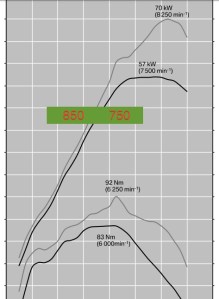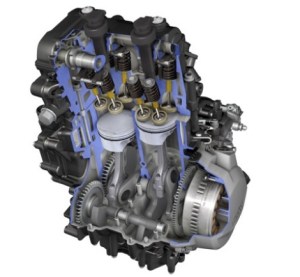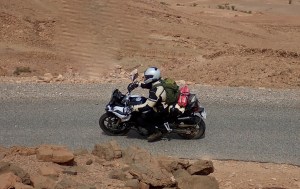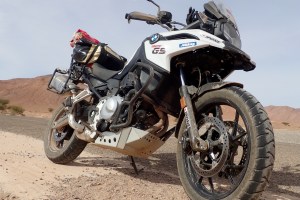
After ten successful years, in 2018 BMW Motorrad replaced the 700 and 800GS parallel twins with all-new ‘750’ and 850 versions. As before, the two models share an identical 853-cc engine but, along with other aspects, are significantly different. According to this detailed BMW press release (click and it downloads; worth reading if this bike interests you) the 750 makes 20% less power (77 / 95hp) but only 10% less torque (83 / 92Nm; see graph, right). It also has a lower seat, a little less weight and suspension travel, better fuel consumption as well as cast tubeless wheels with a smaller 19-er on the front. The 750 will also run stock on 91 RON fuel (unlike the 850 unless modified) and is significantly cheaper: in the UK it currently goes from £8225 vs £9875 for the 850 which makes it cheaper than an XT700.
I’ve ridden the old 700 and 650 twins in Morocco and for me, these lower, mildly less revvy, 19-inch and tubeless shod bikes have always been a better, real-world travel bike option to the flashier, taller 800 and now 850, even if the ‘bigger’ bikes probably outsell them.
Like many P-twins these days, the new engine uses a 270-degree crank to give an impression of more torque – or maybe just because it’s fashionable. They are no longer (or cannot be) engineered to sound like a 1200GS, but even at basic levels, both models come with an array of electronic rider aids and position the fuel tank back up on top, so lifting the centre of gravity.
I rode a bottom of the range 750 (LED dash; no quickshifter, connectivity, ESA and so on) for a week, on winding Moroccan mountain backroads and easy desert trails, covering some 1200kms or 750 miles. The bike had 6300km on the clock (114 hours running time) and was fitted with a thick Givi bashplate, crash bars, handguards and rear racks.
In Adventure Moto World you might say it’s competitors include the KTM 790, Guzzi V85TT, XT700 or just updated Tracer 700, the V-Strom 650 (£6500 discounted new) or a 1000cc Africa Twin. The BMW is cheaper than all of them except the ageing Suzuki and the Tracer, new or old.
What they say
It keeps your engine running, every day. Your heart beats to the rhythm of the BMW F 750 GS. It’s your ticket to the adventure. Because with the balanced Enduro all-rounder, you will master all paths, regardless of the road surface, and expand your horizons – because you want more. The F 750 GS gives you more power, more comfort, more spirit of GS. Feel the strong-charactered engine and enjoy the ease of handling of the F 750 GS. While you’re off discovering the world, you have the bike with the automatic stability control (ASC) and the ABS safely under control. And with the ex-factory option Connectivity, the 6.5-inch TFT-display shows you among other things which junction you have to turn off at or who is calling you. Clear and concise – without distracting you from the road. The entry into your next experience is – also thanks to the low seat height – easier than ever before.

- Compared to the 850, at just £8225 it’s a very good deal
- Enough real-world power to get the job done

- Great brakes with ABS
- Great suspension too. HPA shock with rebound damping
- Stable in corners. Long and low, just like the old 700/650.
- Turns better than old 700 – must be down to the higher CoG plus rake and trail changes.
- Tubeless tyres with easy-access side valves
- Traction control (‘ASC’) plus a rain mode
- LHS scrollable menu with all the essential metrics
- Seat – no complaints this time.
- BMW-style 12-v power outlet on the dash

- Heavy With the added metalwork mine probably came in at 230kg wet, but only felt it when pushing around or trying to pick up.
- Windscreen? More a small transparent plate which does nothing much.
- Engine lacks character compared to a Yamaha CP2 or even an NC750.
- Fuel consumption worse than the 700 – averaged 70mpg (but only measured twice).
- The thin digits on the LCD dash were hard to read easily or if not in direct sun.
- Remaining range (400km when full) proved a little optimistic when pushed to the limit.
Review
As do-it-all gravel travel bikes, the old 650 and 700 twins were both better than most people thought. With some K60s, I took a 650 quite a way out of its (and my) comfort zone back in 2012. So I expected to like the new 750, even if I’d be held back by stock road Anakees.
The 750 retains what looks like a long wheelbase; there’s a cubic foot of collector box packed in behind the engine and in front of the back wheel. Initially, I found the cable-less, electronic throttle lacked damping and the steering had that sports-tourer ‘self-leaning’ thing (like my old TDM). It must be a calculated consequence of weight, rake and trail but as the miles passed by I soon didn’t notice either, instead revelling in the bike’s more positive attributes.
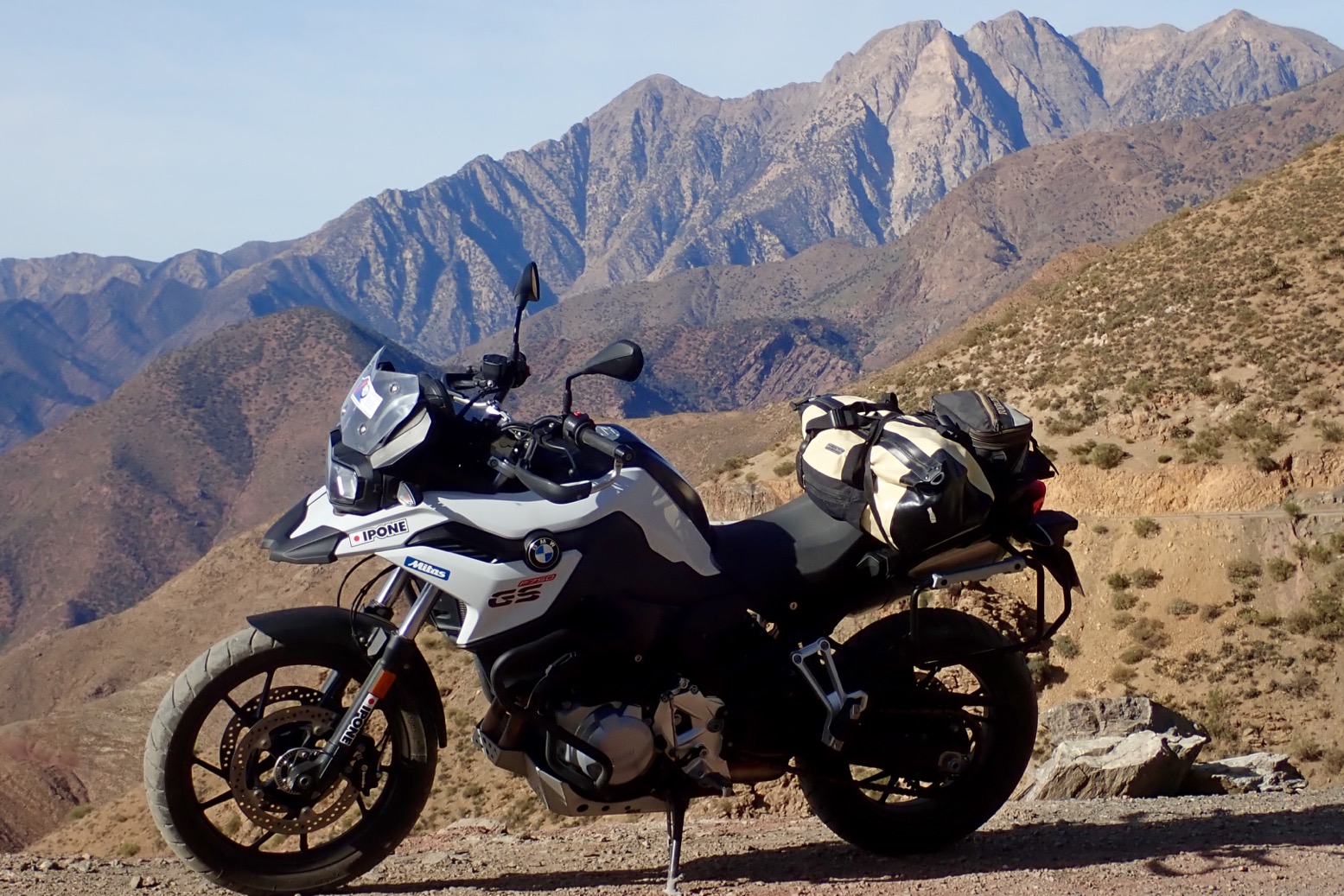
The gearbox has an uncharacteristic slickness for a BMW, easily tapped without the clutch, and I sure appreciated the correctly positioned foot controls after the well-used Sertao I rode the week before which needed foot lifts to brake or change gear. With a few accessories my bike probably weighed not much less than a GS12, but like the 12, it sure feels less once on the move.
A big difference between the 700 was locating the slightly bigger 15-litre tank back up front. This raises the mass of the bike, but as mentioned in the 700 review, too low a CoG can make a bike hard to turn easily. and on the dirt, including loose hairpins, the 750 didn’t exhibit the resistance I felt in the 700.
The 750 and 850 are oddly fitted with a, to me, anachronistic telescopic steering dampers which I’ve not seen since the 70s and which to me signifies a way of disguising a bike’s instability due to poor frame design. It’s not mentioned under that name as in the long press release pdf. A few years ago there was a new version of the 1200GS which was soon recalled or somehow hampered with an unpredictable steering shimmy fixed by retrofitting a steering damper, iirc. Perhaps the 853-cc twins are set up with the same angles and weight distribution. I couldn’t see any way of adjusting the damper and it didn’t have any electronics attached to it.
Road or trail, out of the crate the 750 retains the same excellent suspension without masses of baffling adjustments. For the first few days I left the rear preload as it was, then gave the HPA (left) several cranks (maybe 5 full turns) which stopped my boots dragging (and even being dragged off) on some bends. (I had the same problem with the Sertao the previous week; I’ve never had feet dragged off the pegs before, but they did point down at 45°). Once firmer up and raised a bit, much less boot dragging though I felt I should have increased the rebound damping a tad, but could not be bothered to meddle as it worked fine.
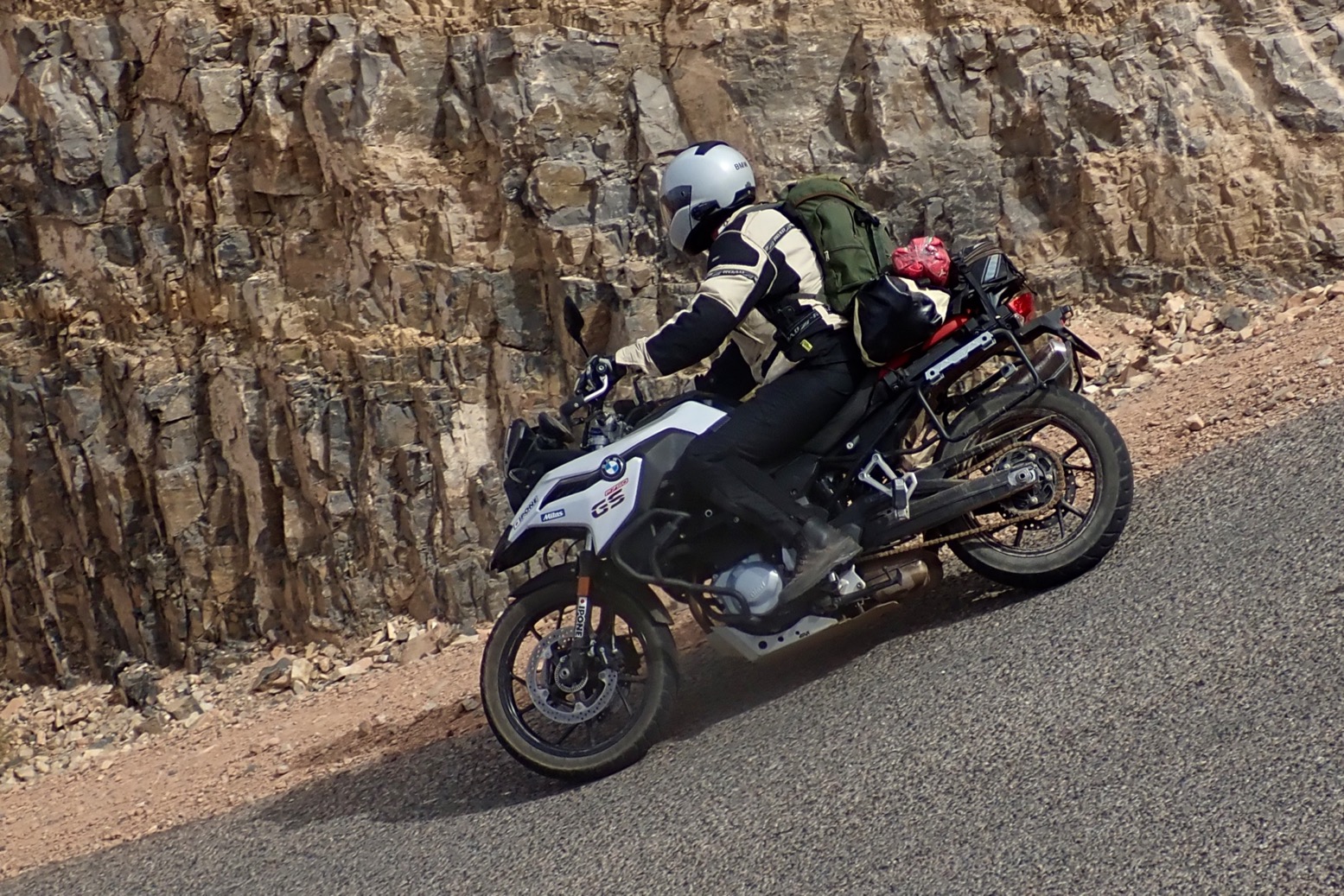
One sad day I’ll count them up, but the circuit I use in southern Morocco must have over a thousand bends. By the end of it I was confidently swinging through the less gravelly curves, never needing to rev over 5000 rpm (about 120kph) to make progress at a location-related pace (ie: not going berzerk).
On start-up it produces a cleverly engineered bark, but like the weight, that soon dissipates on the move and there’s little impression of the off-beat crank’s charismatic throb, even if the torque is all there. For a 270°, the motor lack the character of Yamaha’s CP2 700s (which make 10% less power) and even the NC750 I briefly owned.
On one very steep, rough and loose switchback climb I made the conscious effort not to slip the clutch (done to minimise the risk of stalling and then falling over) and the 750 managed to chug its way at walking pace round most bends until I lost my nerve or ran out of space. You’d not manage that on a big thumper, though next week I’ll try the same test on a 310. I only got to log two tanks to accurately estimate the fuel consumption which averaged 70mpg (58.2 US; 25kpl). One reading was 10% higher, the other 10% lower and pretty similar to the 2012 650 (68.2) but much lower than the 700 (81mpg) with 100,000 on the clock. This reading closely matched the displayed average of 4L/100km (25kpl).
This was my second chance to get to grips with traction control (or Automatic Stability Control: ‘ASC’). On gravelly tarmac the TC light fluttered briefly on the dash, and trying to activate it on the dirt, occasionally the power was notably constrained to hold the back-end in line. But this was me throttling on like an idiot; normally I’d exercise my own traction control to keep wheelspin as I want it. On the dirt letting the back-end step out is usually intentional, either because it’s fun or to rear-wheel steer and square off a tight corner. This is as opposed to the front, which once slipping usually ends in a fall. That’s what you’re really trying to avoid, especially on road tyres but there’s no way electronics can manage that; it takes better tyres or less speed.
It’s likely that on a long, steep and loose climb the TC would beneficially constrain wheelspin, but only up to a point. On low-traction slopes of sand, mud or wet grass I bet it would soon tie itself in knots. Only momentum and knobbly tyres work here but would take quite a nerve piloting nearly a quarter on a ton of 750GS.
It seems to me that TC and modes are nifty but non-essential riding aids which – at negligible weight penalty (unlike ABS) – have become inexpensive enough to throw on to bikes which don’t really need either but which help give the impression of added safety getting more for your money. If they’re serious about safety, I’d sooner see TPMS included as stock, but you can buy a kit for 30 quid. TC and modes might suit riders without decades of pre-electronic riding experience under their belts. As with GPS or smartphones, you either merely find them handy; or you don’t know how or can’t see the point of managing without them.
They say the cast tubeless wheels have been strengthened. Good to know and I like the easy-access valves (left) which eliminate grovelling about with an inflation hose. Fitting a TPMS cap might make it a bit vulnerable to flying rocks, but the valves at least can be easily replaced. On a long trip I’d carry spares.
The ABS was never an issue on the dirt (though I didn’t do any emergency braking). I did find the brakes – or associated fork dive – a bit grabby, but better too much than not enough and the ABS safety net is always here. On the Sertao the previous week, the ill-positioned brake pedal saw me lose the back brake on long descents. No such problems on the twin.
Some LED dash figures like the clock were too thin and therefore hard to read at a glance, but once I got my head around it, the menu on the left bar displayed some useful data including 3 trip meters (including daily), average and live L/100km (hopefully changeable to another metric), ambient and water temperatures and remaining range. I can confirm that the bike I was riding had logged 114 riding hours in 6300kms.
I didn’t cover huge distances in one sitting but the seat on the 750 felt a whole lot better than previous iterations (not hard to do). I think it may even have been height adjustable, but though I took it off a couple of times for other reasons, this was not obvious.
I can’t say the same for the near-useless piece of clear plastic screen (left) which just gives the mounting bolts something to do until you fit something actually useful. I did notice the slimness in the bike’s waistline did make standing up much more comfortable than on the older underseat-tank models. The bars were the usual 2 inches too low for me (6′ 1″). Under the seat there’s some useful stash space, partly because of the skimpy, three-piece toolkit (right).
Summary
On the road and easy trails there really is very little to dislike about the 750GS. I know everyone will ignore me but it’s got enough of everything you need in a travel bike with maybe a little too much weight and electronics. The looks are subjective but I’d say are an improvement and in line with the current humpbacked GS look, all the way down to the 310GS. It’s got a potential 400km range, plus the brakes, torque and stock suspension to do it all. Essential additions would include an actual screen, a centre stand plus pannier racks for your luggage and probably a bashplate and other protection. Having tried it, I could live without TC and a rain engine mode (which I forgot to try) and settle for a similar bike like a mechanically proven Tracer (old model from £6700; 2020 model £7400 claimed) or 19-inch V-Strom for less weight and a lot less money.


